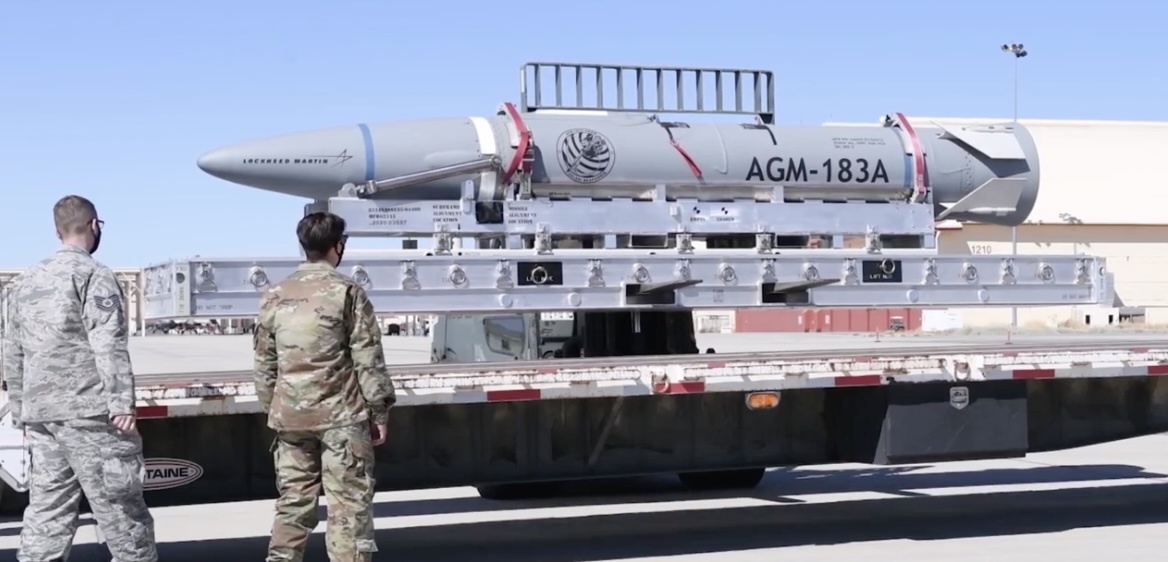Thursday's test flight occurred less than a month after Russia launched its new Oreshnik hypersonic ballistic missile into the Ukrainian city of Dnipro. On Wednesday, Reuters reported that Russia could launch another Oreshnik in the coming days.
According to a Congressional Research Service summary, Dark Eagle is a truck-launched system that fires hypersonic missiles that can exceed 3,800 mph — more than five times the speed of sound.
Reportedly developed by Lockheed Martin and Northrop Grumman, these missiles have a range of 1,725 miles.
"They can reach the top of the Earth’s atmosphere and remain just beyond the range of air and missile defense systems until they are ready to strike, and by then it’s too late to react," the CRS summary said.
Extensive flight testing is needed to shield sensitive electronics and predict aerodynamics at sustainedtemperatures as high as 3,000 degrees. Issued in September, that CRS summary also noted that Army officials were planning to conduct one more major test by the end of 2024 "to decide whether or not to field it to the first unit in 2025."
"Army officials reportedly noted, 'What we’ve got to do is make sure we have a full end-to-end test as close to an operational test that is successful. The Army needs to have confidence it’s safe and effective to actually put in a unit that might have to go to war. We haven’t had that test event yet where it’s fully succeeded, but we’re going to have, hopefully have, it this year,' " the summary said.
U.S. military: Long-Range Hypersonic Weapon
In February 2023, the 1st Multi-Domain Task Force deployed the Long-Range Hypersonic Weapon system more than 3,100 miles cross-country from Joint Base Lewis-McChord in Washington to Cape Canaveral. The weapon was transported for Operation Thunderbolt Strike, "a full rehearsal of expeditionary hypersonic launch capabilities," a press release said.
Soldiers with the 5th Battalion, 3rd Field Artillery Regiment conducted training and practice drills with the LRHW system at Cape Canaveral. Flight tests were scheduled throughout 2023 in March, September and October, but DoD officials said those launches did not occur.
“Our Soldiers processed real missions, with real data, in real time, to produce real effects to learn lessons and generate readiness. We’re training the way we will fight, and our Soldiers are ready to deploy and employ this critical capability forward,” Brig. Gen. Bernard Harrington said in a March 2023 press release.
Then in June 2024, the Navy and Army conducted a flight test of a two-stage hypersonic missile from the Pacific Missile Range Facility in Kauai, Hawaii. A press release noted the test marked a step forward for the LRHW and Conventional Prompt Strike programs.
"This flight test of the common hypersonic missile marks a milestone for our nation in the development of this capability," Vice Adm. Johnny Wolfe Jr, director of the Navy's Strategic Systems Programs, said in a June 2024 press release.
Mysterious navigational warnings precede launch
Ahead of Thursday's hypersonic missile test, the Federal Aviation Administration issued a mysterious temporary flight restriction for unspecified "space operations," barring pilots from a narrow zone extending offshore southeast from the Cape. This flight restriction took effect from 11:20 a.m. to 3:02 p.m.
However, no known orbital rocket launches — such as SpaceX's Falcon 9 liftoffs — had been announced for Thursday from the Space Coast.
The U.S. Coast Guard and Space Launch Delta 45 also issued a Thursday rocket-launch navigational advisory for boaters during roughly the same time frame. The title: "Hazardous Operations." No further details were released.
Next on the Eastern Range schedule, SpaceX will launch a GPS III satellite Friday evening. The four-hour launch window extends from 6:30 p.m. to 10:30 p.m., according to a National Geospatial-Intelligence Agency navigational advisory.
The Falcon 9 rocket will rise from Launch Complex 40 at Cape Canaveral Space Force Station.
Quelle: Florida Today




